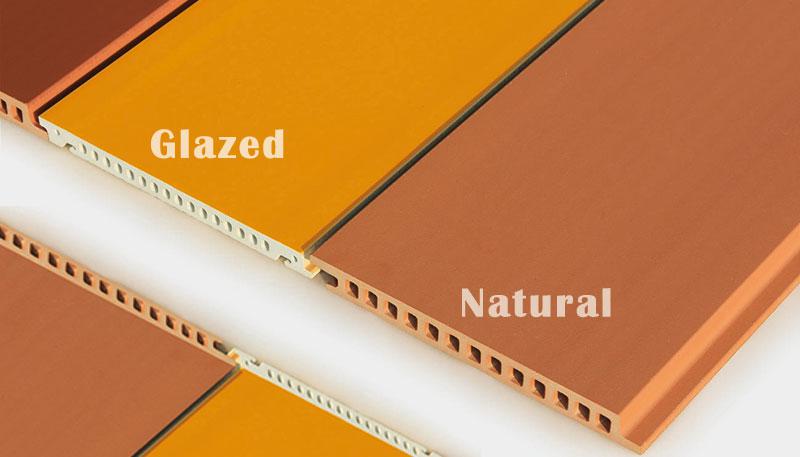As a natural environment-friendly external wall
material for buildings, terracotta panel is highly sought after by
architectural designers. And the architectural designers have strict
requirements about the terracotta façade’s color. The panel is not only required
to keep the colors from fading under different climates, but also should keep color
consistency throughout the entire panel, so that the panel can remain
intactness in appearance when the panel surface is somewhat worn away.

LOPO terracotta panels are fired at high temperature from high-pressure extruded natural clay. The panel’s color is long-lasting because the color is naturally formed by proportionately mixing different clay according to the specific recipe (without adding any chemical dye) and accurately controlling the firing time and temperatures. A LOPO terracotta panel is made of the same material both in its surface layers and internal layers, so that the color is consistent throughout the entire panel, except for glazed panels or other panels that have special finishing. However, many architectural designers have raised questions with regard to the color consistency of the unglazed terracotta panels, because they have found the samples of the panels have deeper color in the surface layers than in the internal layers. In fact, the slight difference between the surface color and cross-section color of the unglazed terracotta panels is mainly due to the three reasons as below:
The characteristics of extrusion: During the process of extrusion, finer clay particles will float in the surface layers (front or rear) of the panel because of the pressure characteristics, and coarser clay particles are easily squeezed into the internal layers. Since the density and coloring properties of the fine particles are better than those of the coarse particles, the unglazed panel generally has a deeper color and higher density in the surface layers than in the internal layers.
The difference in firing temperatures and environment: during the process of firing, the top layers of the panel are exposed to a slightly different calcination temperature and environment than the middle layers and bottom layers; In some cases, top layers are exposed to a different calcination temperature than bottom layers for the purpose of adjusting the product dimensions; Furthermore, to prevent the kiln from being jammed by clay panels that may stuck to the rollers inside the kiln during calcination, the dried clay panels have to be pasted with a strip of white-color magnesium oxide on the bottom of the panels before entering the roller kiln for firing. The bottom of each panel contacts the roller throughout the process of the firing, and therefore is more likely to be stained by the roller; As a result of the above factors, the unglazed terracotta panel normally has slightly different colors in its top, middle and bottom layers.
Color difference caused by cutting: Cutting a terracotta panel is actually rubbing the panel by an electric-powered spinning diamond blade that is ten times rigid than the terracotta panel. It can be said that cutting a terracotta panel is a process of grinding the cross-section of the terracotta panel. After being grinded, the particle density and color of the cross-section will materially change, and therefore may be slightly different from the panel surface.
Therefore, it is normal that there is slight difference between the surface color and cross-section color of the unglazed terracotta panels, and such difference is caused by the manufacturing process of terracotta facade. This won’t have any impact on the terracotta panel’s role as a natural environment-friendly external wall material that has superiority in color persistence and appearance retention.
All rights reserved. No part of this article may be reproduced or retransmitted in any form without prior permission of www.lopochina.com